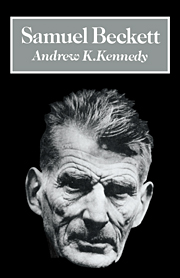Introduction
Published online by Cambridge University Press: 23 February 2010
Summary
Beckett at eighty plus is eminently visible – a face and a name appropriated by the world – as the leading non-realist Western writer of the second half of our century. This visibility is itself ironic, for he had chosen reclusive privacy in living, and the isolation of the self as an obsessive subject. The narrators of his fiction and the protagonists of most of his plays are incurable soliloquisers. The most memorable image in his only film is a man (played by Buster Keaton) for ever in retreat from a potential observer. The writings of his youth and early manhood were mostly neglected in the thirties and forties and are, with the exception of Murphy, not widely read today. Again, the ageing writer of the seventies has produced perfect yet highly compressed ‘minimalist’ texts which are not likely to become familiar, in the literal as well as in the literary sense – preserving their strangeness beyond reading and performance.
The fame of Waiting for Godot (written in 1948 but first performed only in 1953 in Paris and 1955 in London) began to transform Beckett's situation – from the obscure avant-garde writer to the world figure. That particular play, performed everywhere from the San Quentin penitentiary to colleges of education, had become a set book in secondary schools and a relative best-seller by the 1970s. Gradually the more elusive plays and novels also came to attract world-wide attention and – a significant fact for new readers and their guide – a vast array of criticism, comparable only to the industry devoted to major writers of the past.
- Type
- Chapter
- Information
- Samuel Beckett , pp. 1 - 16Publisher: Cambridge University PressPrint publication year: 1989



